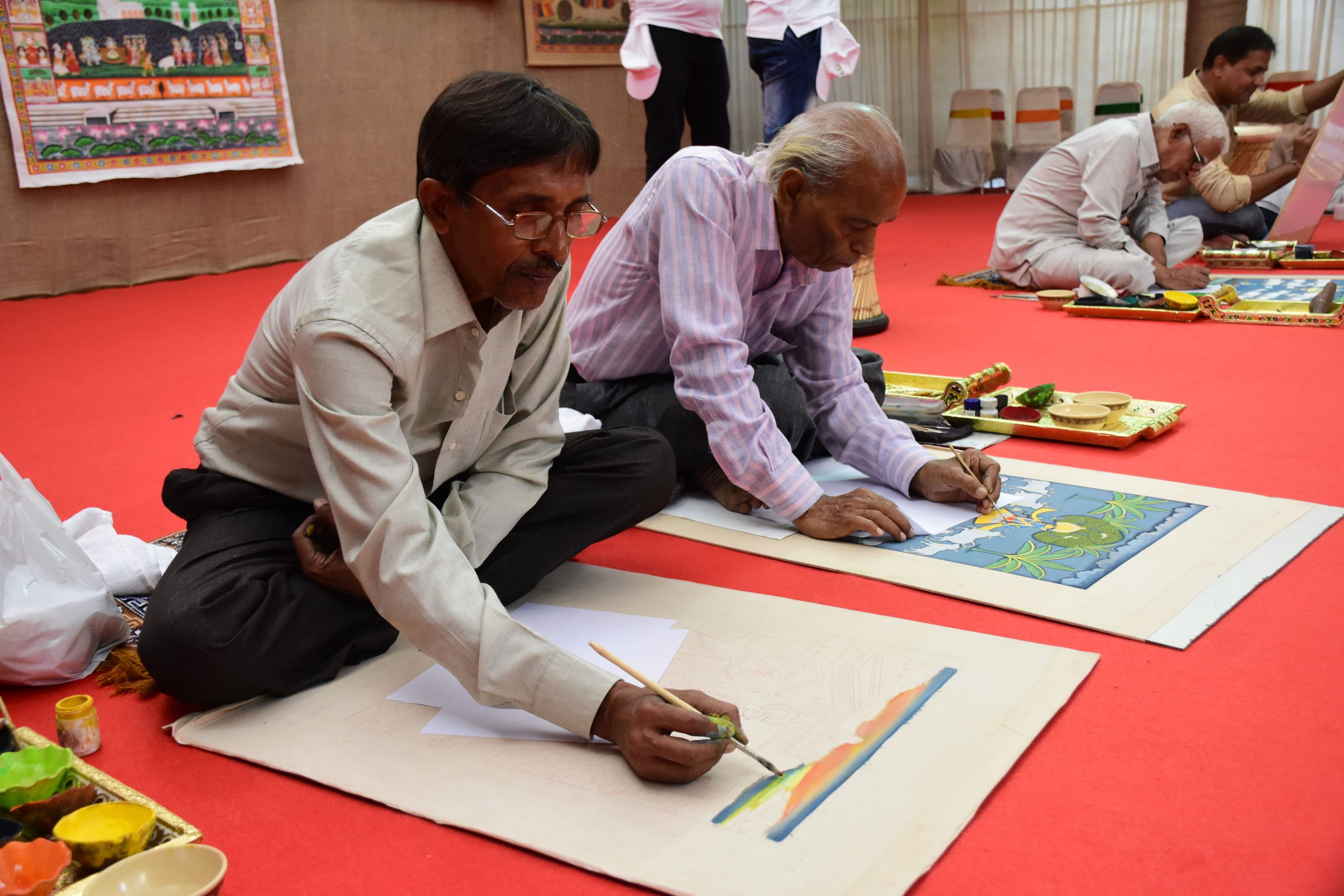As a child, stories always fascinated me. I’d look at my Nani with gleaming eyes as she would narrate the tales of Krishna.
Recently, through a conversation with Shruti Gaggar – an active member of ‘Project Virasat’, an initiative under ENACTUS, Shri Ram College of Commerce (SRCC) – I discovered that there’s an entire artform which depicts these very tales of Krishna called Pichwai.
With a basic Google search, I found that Pichwai is a more than 400-year-old devotional art form wherein the artist makes paintings on a cloth which are mostly hung on the walls of Hindu temples, especially in Shrinathji temple in Nathdwara, Rajasthan.
Problems faced by the Pichwai artists
According to Virasat team, Pichwai is under threat as authentic designs are being copied and sold at cheap prices, making it increasingly difficult for the artists of Nathdwara to capture the market. “There is no sign of authenticity which differentiates these traditional paintings due to which the preservation of their heritage continues to be a big challenge,” Gaggar says.
हमारी पहचान नाथद्वारा से है और नाथद्वारा की पहचान पिछवाई से है।, said Suresh Sharma, a Pichwai artist in a conversation with the members of Virasat.

Artists of Nathdwara – Parmanand Sharma (L) and Suresh Sharma (R). Photo: Shruti Gaggar.
In order to gain a better understanding, the Virasat team started researching Pichhwai in January 2020. Virasat is an umbrella organisation run by SRCC students wherein the members identify various dying artforms and find customised solutions in order to revive them.
Also read: ‘Project Virasat’: SRCC Students’ Initiative to Revive Dying Artforms

Team Virasat along with the Pichwai artists. Photo: Shruti Gaggar
During their research, they discovered a website, The Artists of Nathdwara (it has now been revamped by Virasat) which was very poorly made and didn’t have enough information about the artists or their paintings except for their contact numbers. When the team got in touch with them, they found that the problem of plagiarism was costing them their livelihoods.
Due to this fear of plagiarism, the artists were not comfortable selling the paintings online. In addition, she adds, “The onset of the pandemic also lead to a crash in the local market resulting in a further decline in the demand for the paintings.”
Over the course of their research, the team also met Dr Madhuvanti Ghose, an avid collector of Pichwai paintings and first Alsdorf Associate Curator at the Art Institute of Chicago. Dr Ghose has taught at the Universities of London, Oxford and Sussex and Chicago. Owing to her interest in the various craft forms, she has been working with the artists since 2014. She is now an essential part of the project and has been working along with the members of Virasat.
The 3-phase intervention plan of project Virasat
The online research was followed by a visit to the Nathdwara in Rajasthan to get a better understanding of the kind of problems the artists faced. This helped them come up with a three-phased intervention plan.

Member of Virasat Taruni Singhal, Shruti Gaggar and Pichwai artist Parmanand Sharma (L-R).
In the third phase, they revamped the existing website and made it into an e-commerce website, wherein the potential customer can get in touch with the artist and purchase the painting from them directly. So far, 30 artists are on the website.
Also read: ‘Lockdown Reminiscent of 1971 War’: Meghwal, Rangrez Artisans of Thar
Even though the members of Virasat are managing the website and facilitating the work from the back-end, for now, their aim, in the long run, is to make this a self-sustainable website. The team also plans to establish an art gallery in Nathdwara with the help of the government where Pichwais can be showcased.
Other than that, one of the main aims of the Virasat team to share these stories is to bring about some awareness and to educate people about the artform. “Even though these paintings are expensive as it requires a fair amount of time, if people are aware, they would be willing to spend their money to buy these posters. And this, I believe, would help reduce the threat of plagiarism,” Gaggar says.
You can find them on Instagram @projectvirasat.
All images provided by Shruti Gaggar.

